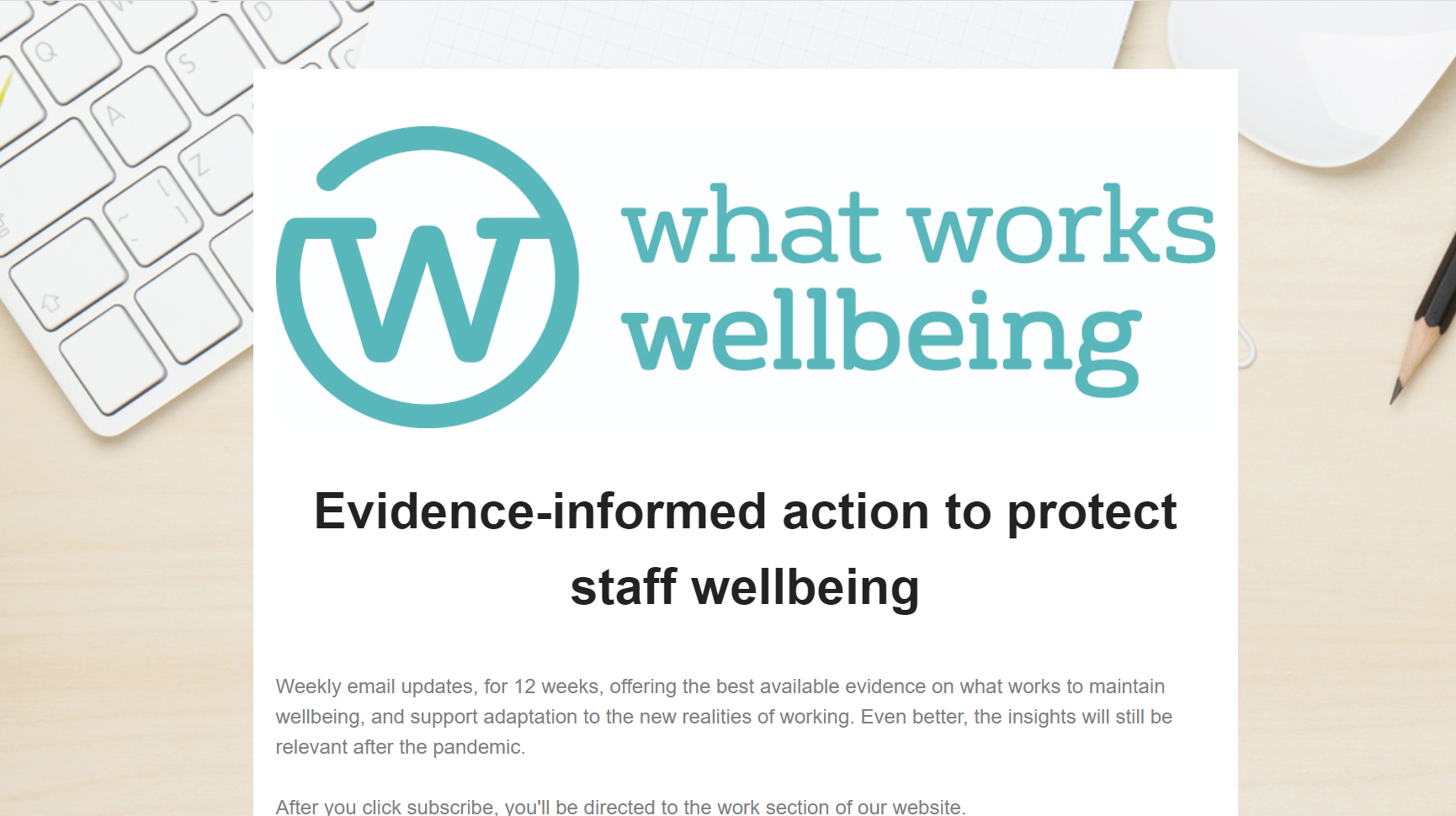Covid-19 and work email series

Covid-19 led to sudden and huge changes across society, and to how we work. Our 12-part email series offers the best available evidence on what works to maintain wellbeing, and support adaptation to the new realities of working.
This email series was created as a result of the pandemic, but its insights remain relevant beyond it. Sign up here to receive the email series over a 12 week period. Alternatively, below is a summary of each email and a link to the full versions:
How can work affect our sense of purpose?
Feeling that life has meaning and purpose, that the things we do are worthwhile, is a key driver of personal wellbeing. This can be found in many aspects of life; work is one of the main sources of it for many people.
How are your colleagues getting on?
During this pandemic, all our relationships have inevitably been affected. For some, remote working, physical distancing or loss of employment are likely to increase feelings of loneliness which can lead to poor personal wellbeing, poor physical and mental health.
How happy are your employees?
Improving, or protecting, employee wellbeing is a valuable goal in itself. Yet the evidence shows that there is a significant knock-on effect of treating your people well: it causes productivity to rise.
Do your employees feel safe?
Everyone needs to feel safe going to work. Not only is this part of the duty of care for an employer, but jobs that involve risks to health and safety are associated with substantially lower levels of job and life satisfaction, happiness and positive emotional experiences.
Are you developing your existing talent?
Good jobs, in which employees are able to use their skills, tend to lead to higher wellbeing. For high performance to be sustainable we need achievement, purpose, enjoyment and crucially learning.
Is work-life conflict affecting your employee wellbeing?
We know that high quality jobs lead to sustained personal wellbeing and better organisational performance. These jobs are characterised, among other things, by the right level of intensity while still enabling a good work-life balance.
Are you or your staff worried about money?
Financial security – being and feeling able to make ends meet – is one of the key aspects of a good job and a driver to workplace wellbeing.
Want to improve employee wellbeing, but don’t know where to start?
How to measure what’s specifically right for your organisation and employees, as well as how to make the most of your resources and effort to improve wellbeing in practice.
Do your employees feel they are treated fairly?
During this time of huge change and uncertainty, employers can protect their employees’ wellbeing by recognising diversity, valuing it and adapting accordingly.
How do you know which wellbeing activities are effective for your employees?
There are many ways in which an organisation can address employees’ wellbeing. The question is, where to start. The review finds that for any activity – from job design to team-building to sport programmes and so on – there are five principles that underpin a successful wellbeing intervention which you can use when planning your approach to wellbeing.
- How can work affect our sense of purpose?
- How are your colleagues getting on?
- How happy are your employees?
- Do your employees feel safe?
- Are you developing your existing talent?
- Is work-life conflict affecting your employee wellbeing?
- Are you or your staff worried about money?
- Want to improve employee wellbeing, but don’t know where to start?
- Do your employees feel they are treated fairly?
- How do you know which wellbeing activities are effective for your employees?
![]()
[gravityform id=1 title=true description=true ajax=true tabindex=49]
